In this comprehensive guide, we’ll delve into 20 indispensable Tools for Front End Developers that should be considered incorporating into their toolkit.
In the fast-paced world of front end development, having the right tools at your disposal can make all the difference between a cumbersome, time-consuming process and a smooth, efficient workflow. As technology advances and web development standards evolve, front end developers must stay equipped with an arsenal of essential tools to tackle the challenges of building modern, responsive web applications.
Whether you’re a seasoned professional or just embarking on your coding journey, these tools will empower you to create compelling user interfaces and deliver seamless web experiences.
Text Editor/IDE:
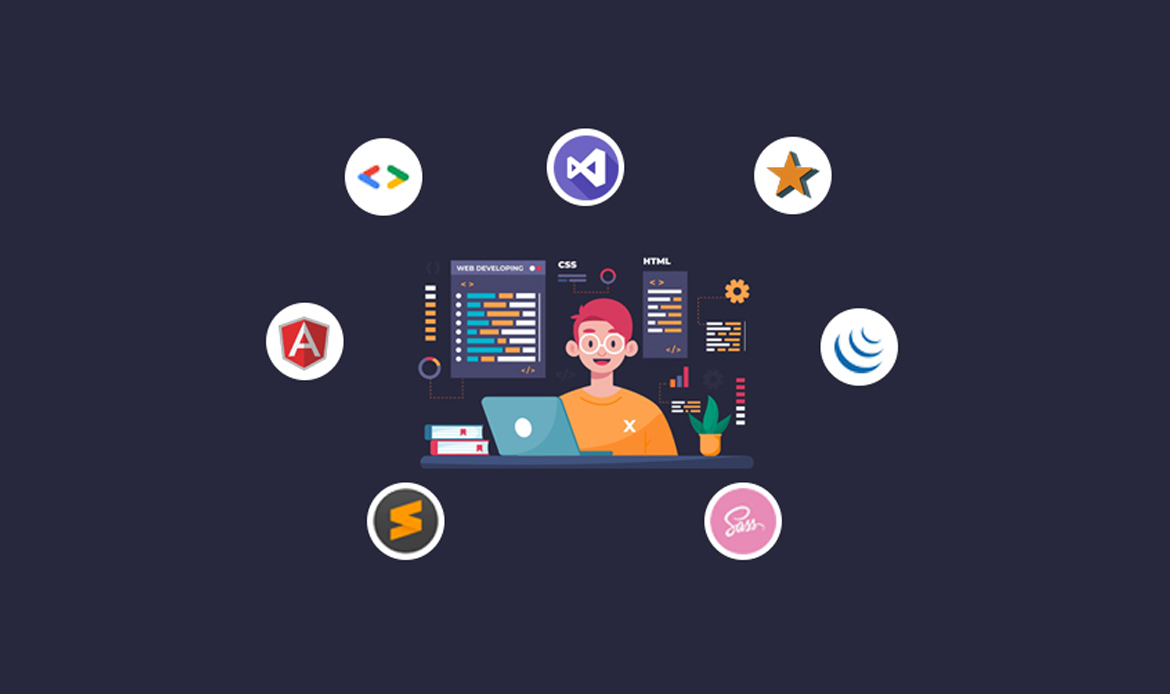
A text editor or Integrated Development Environment (IDE) is the cornerstone tool for front end developers. It’s where code is written, edited, and organized. While there are numerous options available,
some popular choices among front end developers include:
a. Visual Studio Code:
Developed by Microsoft, Visual Studio Code (VS Code) has gained immense popularity due to its versatility, extensive extensions marketplace, and robust features. It offers built-in support for JavaScript, TypeScript, HTML, CSS, and many other languages. Features like IntelliSense, debugging capabilities, Git integration, and customizable themes make it a favorite among developers.
b. Sublime Text:
Known for its speed and simplicity, Sublime Text is another popular choice among front end developers. It offers a distraction-free interface, powerful search and replace functionality, multiple selections, and a wide range of plugins for customization.
c. Atom:
Developed by GitHub, Atom is an open-source text editor known for its flexibility and ease of use. It comes with built-in package manager, smart autocompletion, multiple panes, and a vibrant community creating plugins and themes.
Version Control System (VCS):

Version Control System (VCS) is essential for tracking changes in code, collaborating with team members, and maintaining code integrity. Git, a distributed version control system, is widely used in the development community. Key benefits of using Git include:
a. History tracking:
Git tracks every change made to the codebase, allowing developers to revert to previous versions if needed.
b. Collaboration:
Git enables seamless collaboration among team members by facilitating code sharing, reviewing, and merging.
c. Branching:
Git allows developers to work on multiple features or fixes simultaneously by creating branches, isolating changes, and merging them back into the main codebase when ready.
Popular platforms for hosting Git repositories include GitHub, GitLab, and Bitbucket, offering additional features like issue tracking, project management, and continuous integration.
Package Managers:
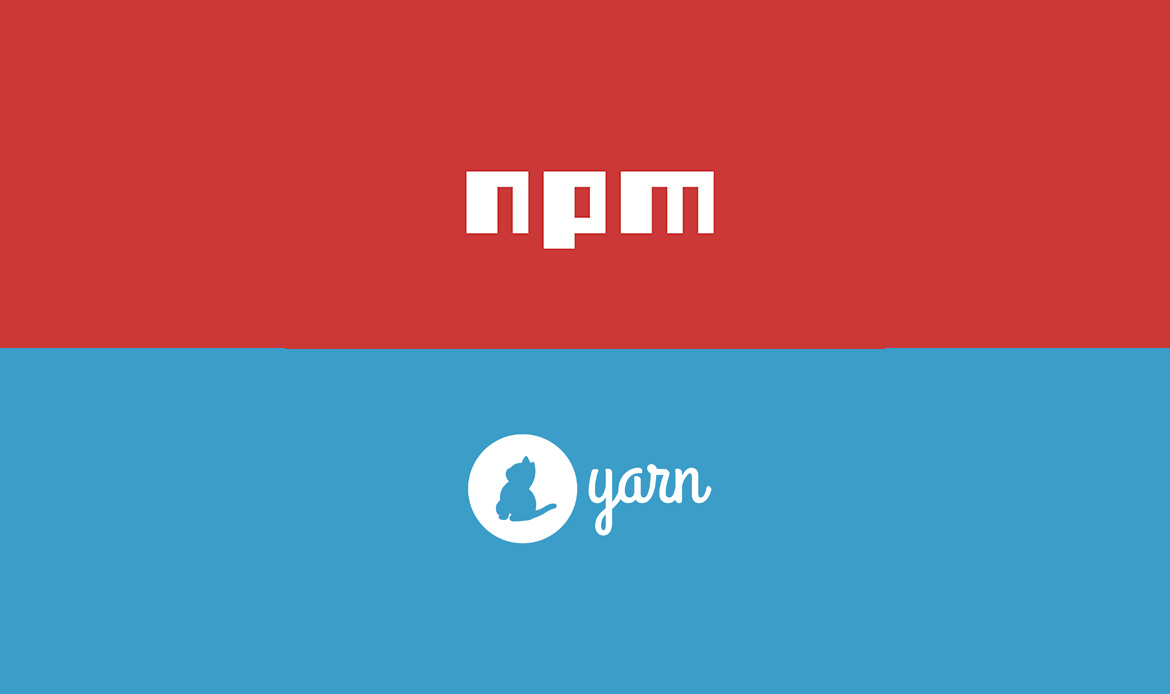
Package managers are tools that simplify the process of managing and installing libraries, frameworks, and dependencies in web development projects. They help front end developers avoid manual downloading, updating, and resolving dependencies. Two widely used package managers in the front end development ecosystem are:
a. npm (Node Package Manager):
npm is the default package manager for Node.js, a JavaScript runtime environment. It hosts a vast repository of packages and provides command-line tools for package installation, version management, and dependency resolution.
b. Yarn:
Developed by Facebook, Yarn is another package manager for JavaScript projects. It offers faster installation, deterministic dependency resolution, and offline mode for working in environments with limited or no internet connectivity.
Both npm and Yarn are compatible with popular front end frameworks like React, Angular, and Vue.js, making them indispensable tools for managing project dependencies.
Browser Developer Tools:
Browser Developer Tools are built-in features of web browsers that enable front end developers to inspect, debug, and optimize web pages in real-time. These tools provide insights into the structure, performance, and behavior of web applications. Key features of browser developer tools include:
a. DOM Inspection:
Developers can inspect and manipulate the Document Object Model (DOM) of web pages to understand their structure and hierarchy.
b. CSS Styling:
Browser developer tools allow developers to inspect and modify CSS styles applied to elements, facilitating visual debugging and tweaking.
c. JavaScript Debugging:
Developers can set breakpoints, step through code, and monitor variables in JavaScript for debugging and troubleshooting.
d. Network Analysis:
Developers can analyze network requests, view response headers, and measure loading times to optimize performance.
e. Mobile Emulation:
Browser developer tools offer emulation features to simulate various devices and screen sizes, enabling developers to test responsiveness and mobile-friendliness.
Popular browser developer tools include Chrome DevTools, Firefox Developer Tools, and Safari Web Inspector, each offering a comprehensive set of features tailored to developers’ needs.
Task Runners and Build Tools:
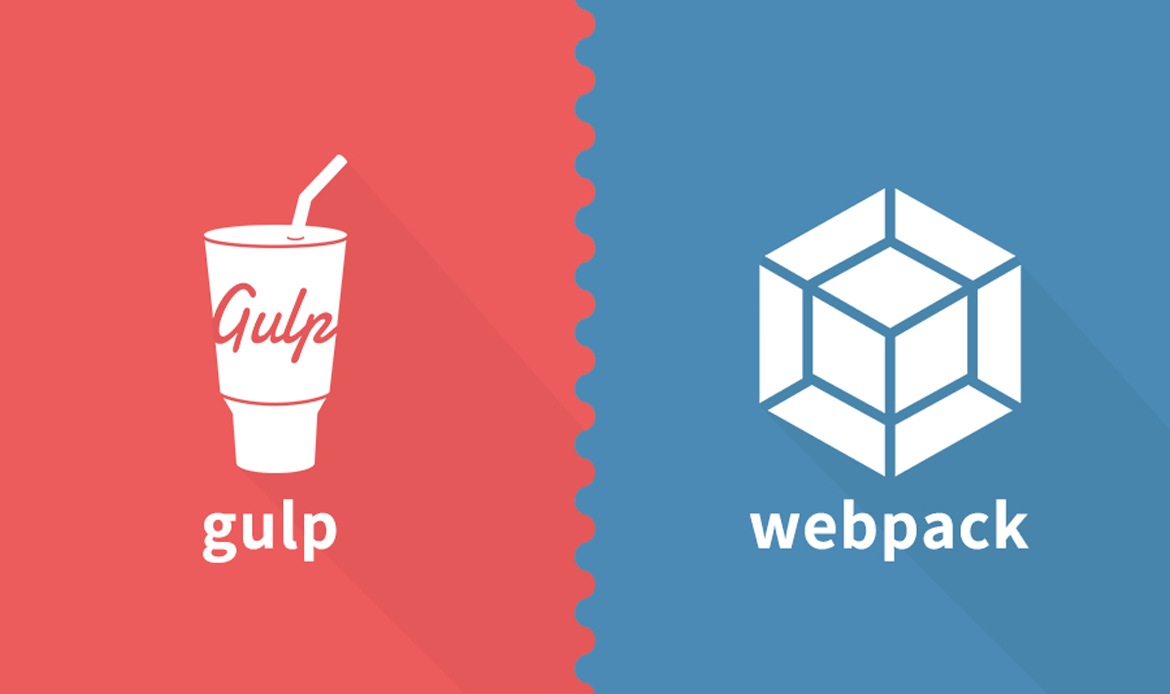
Task runners and build tools automate repetitive tasks, optimize code, and streamline the development workflow. They enable front end developers to perform tasks like code compilation, bundling, minification, and optimization with ease. Some essential task runners and build tools include:
a. Gulp:
Gulp is a popular task runner that uses JavaScript-based configuration for defining tasks and workflows. It excels at automating tasks like file concatenation, image optimization, and live reloading, enhancing productivity and efficiency.
b. webpack:
webpack is a powerful module bundler widely used in modern web development workflows. It enables developers to bundle JavaScript modules, manage assets like CSS, images, and fonts, and optimize code for production deployment. webpack’s extensive ecosystem of plugins and loaders makes it highly customizable and adaptable to diverse project requirements.
By incorporating these essential tools into their workflow, front end developers can enhance their productivity, collaborate effectively with team members, and deliver exceptional user experiences in web applications and websites.
Wireframing/Prototyping Tools:
Design tools and prototyping software enable front end developers to create mockups, wireframes, and prototypes of web interfaces before writing code. These tools facilitate collaboration with designers and stakeholders, validate design concepts, and iterate on user interface designs efficiently.
Some popular design tools and prototyping software include:
a. Adobe XD:
Adobe XD is a powerful design and prototyping tool that allows designers and developers to create interactive prototypes, wireframes, and user interfaces. It offers features for designing responsive layouts, creating animations, and sharing prototypes for feedback and collaboration.
b. Figma:
Figma is a collaborative design tool that enables teams to create, prototype, and iterate on designs in real-time. It offers features for designing responsive layouts, creating reusable components, and sharing designs with stakeholders for feedback and review.
c. Sketch:
Sketch is a vector-based design tool for creating user interfaces, icons, and illustrations. It provides an intuitive interface, reusable symbols, and plugins for extending functionality, making it a popular choice among UI/UX designers.
Design tools and prototyping software play a vital role in the front end development process, facilitating the creation of visually appealing and user-friendly web interfaces.
CSS Preprocessors:
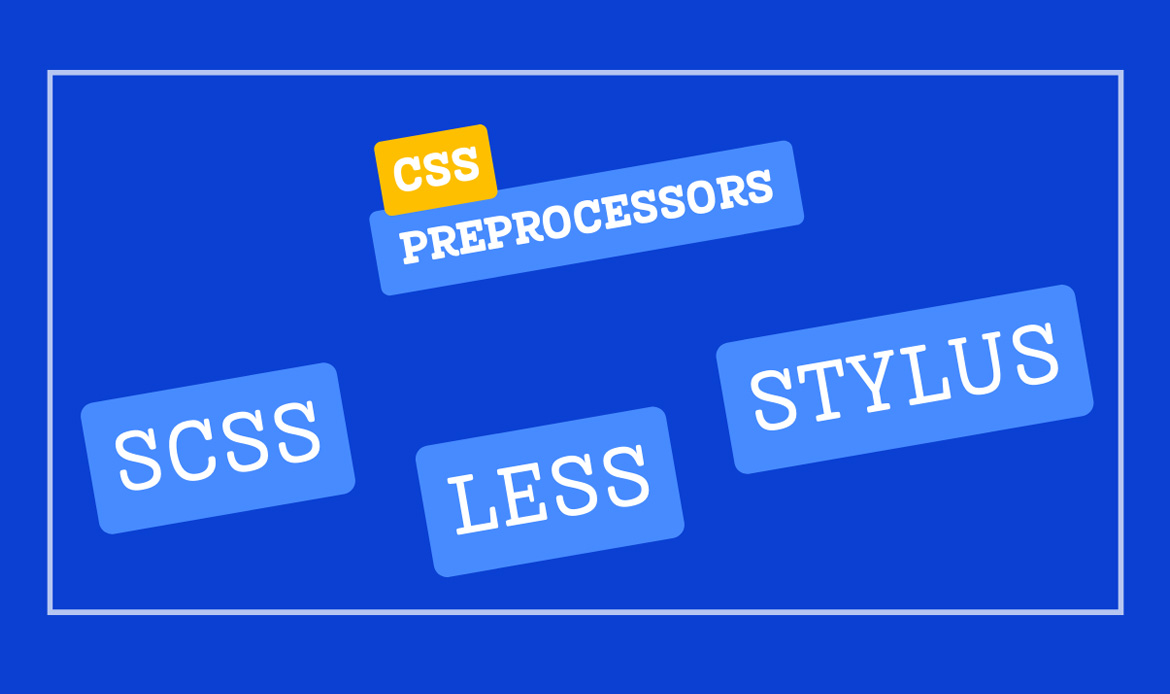
CSS preprocessors are tools that extend the capabilities of CSS by introducing features like variables, nesting, mixins, and functions. They help front end developers write cleaner, more maintainable CSS code and streamline the styling process. Some popular CSS preprocessors include:
a. Sass (Syntactically Awesome Stylesheets):
Sass is one of the most widely used CSS preprocessors, offering features like variables, nesting, mixins, inheritance, and control directives. It enhances CSS with a more programmatic approach, enabling developers to write modular and reusable stylesheets.
b. Less:
Less is another CSS preprocessor that simplifies CSS authoring with features like variables, mixins, nested rules, and functions. It provides a familiar CSS-like syntax while introducing powerful capabilities to improve code organization and maintainability.
c. Stylus:
Stylus is a CSS preprocessor known for its concise syntax and expressive features. It offers flexibility and extensibility through features like variables, mixins, conditionals, and loops, allowing developers to write CSS code more efficiently.
CSS preprocessors compile their enhanced syntax into standard CSS, which browsers can interpret, making them essential tools for managing complex styling requirements in front end development projects.
Graphics Editors:
In front-end development, graphics play a significant role in creating visually appealing and engaging user interfaces.
a. Adobe Photoshop:
Used for editing and manipulating raster graphics (pixel-based images).
Features tools for image editing, typography, and web design.
Ideal for tasks like photo editing, creating mockups, and designing user interface elements.
b. Adobe Illustrator:
Used for creating and editing vector graphics (scalable, mathematically-defined shapes).
Features vector drawing tools, color management, and export options.
Ideal for tasks like creating logos, icons, illustrations, and other graphical elements.
Both tools are crucial for designing visually appealing and functional user interfaces in web development.
Content Management Systems (CMS):
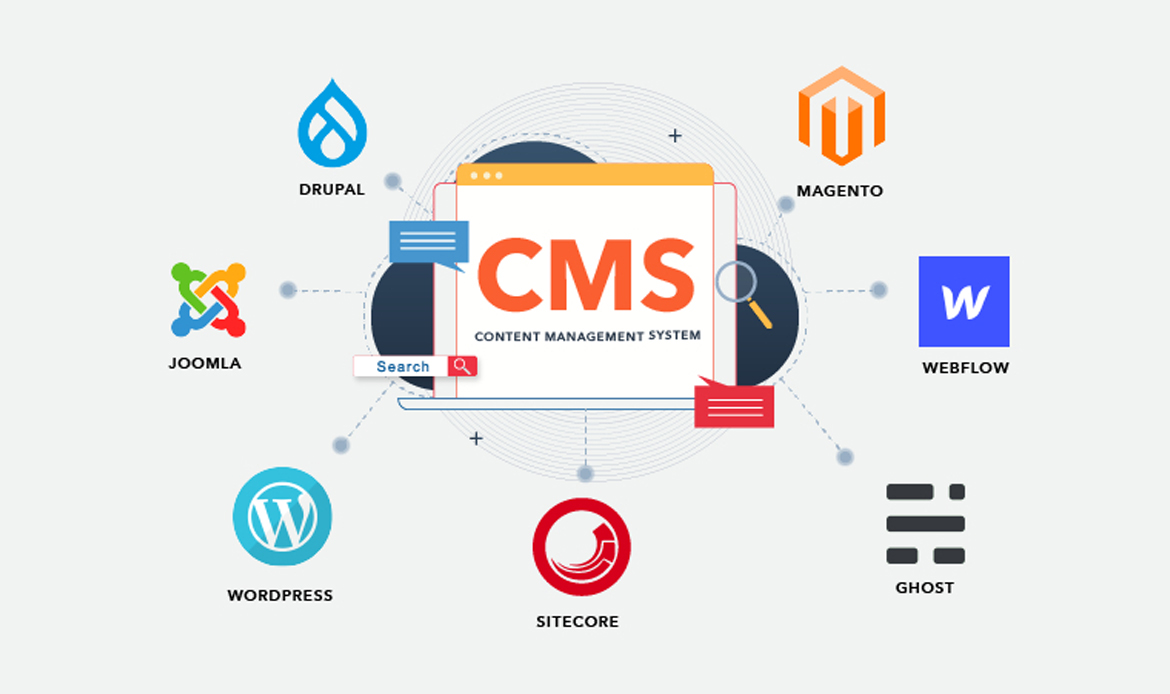
Content Management Systems (CMS) provide a framework for creating, managing, and publishing digital content, including websites and web applications. While CMS platforms are often associated with backend development, they play a significant role in front end development as well, enabling front end developers to integrate and customize themes, templates, and content structures.
Some popular CMS platforms include:
a. WordPress:
WordPress is a widely used open-source CMS known for its ease of use, flexibility, and extensibility. It offers a vast ecosystem of themes and plugins that enable front end developers to customize the appearance and functionality of websites without extensive coding.
b. Drupal:
Drupal is a powerful open-source CMS that offers robust features for building complex and scalable web applications. It provides a flexible architecture, extensive customization options, and a thriving community of developers contributing modules and themes.
c. Joomla:
Joomla is another popular open-source CMS that combines ease of use with advanced features for building websites and web applications. It offers a user-friendly interface, customizable templates, and extensions for enhancing functionality.
Front end developers often work closely with designers and content creators to implement designs and user interfaces within CMS platforms, making them essential tools for web development projects.
Responsive Design Frameworks:
Responsive design frameworks provide a set of pre-designed components, styles, and utilities that facilitate the development of responsive web interfaces. These frameworks offer a standardized approach to building responsive layouts and ensure consistency across projects.
Some popular responsive design frameworks include:
a. Bootstrap:
Bootstrap is a front end framework developed by Twitter, offering a comprehensive set of CSS and JavaScript components for building responsive web interfaces. It provides a grid system, typography, forms, buttons, navigation components, and more, making it a popular choice for rapid prototyping and development.
b. Foundation:
Foundation is a responsive front end framework developed by ZURB, offering a robust set of customizable CSS and JavaScript components. It provides a flexible grid system, UI elements, responsive navigation, and accessibility features, empowering developers to create modern and accessible web experiences.
c. Bulma:
Bulma is a modern CSS framework based on Flexbox, offering a lightweight and modular approach to building responsive web interfaces. It provides a flexible grid system, customizable components, and utility classes for layout, typography, and spacing, allowing developers to create sleek and responsive designs.
Responsive design frameworks streamline the development process and enable front end developers to create responsive and visually appealing web interfaces with minimal effort.
Responsive Design Testing Tools:

With the proliferation of devices and screen sizes, ensuring a consistent and optimized user experience across various devices is crucial for front end developers. Responsive design testing tools help developers preview and evaluate websites or web applications across different viewport sizes and devices. Some popular responsive design testing tools include:
a. BrowserStack:
BrowserStack is a cloud-based cross-browser testing tool that offers real device testing across a wide range of browsers and devices. It allows developers to test responsive designs on multiple devices simultaneously, speeding up the testing process and ensuring compatibility across platforms.
b. Responsively:
Responsively is an open-source tool for testing responsive designs in multiple viewports simultaneously. It provides a visual interface for previewing websites across different devices, enabling developers to adjust layouts and styles as needed to achieve optimal responsiveness.
c. Chrome DevTools Device Mode:
Browser developer tools like Chrome DevTools offer a Device Mode feature that simulates various device viewports directly within the browser. Developers can toggle between different device presets or customize viewport dimensions to test responsiveness and debug layout issues.
By using responsive design testing tools, front end developers can identify and address design inconsistencies, layout breakpoints, and usability issues across a diverse range of devices and screen sizes.
Front End Frameworks and Libraries:
Front end frameworks and libraries provide pre-built components, utilities, and design patterns that accelerate development and ensure consistency in UI design and behavior. They abstract common tasks and functionalities, allowing developers to focus on building features and enhancing user experiences. Some popular front end frameworks and libraries include:
a. React.js:
Developed by Facebook, React.js is a JavaScript library for building user interfaces. It employs a component-based architecture and virtual DOM for efficient rendering and state management, making it ideal for building interactive and dynamic web applications.
b. Angular:
Angular is a comprehensive front end framework maintained by Google. It provides tools and libraries for building large-scale, single-page applications (SPAs) with features like data binding, dependency injection, routing, and form validation.
c. Vue.js:
Vue.js is a progressive JavaScript framework known for its simplicity and flexibility. It offers a gentle learning curve and provides features like reactive data binding, component-based architecture, and declarative rendering, making it suitable for building lightweight and modular web applications.
Front end frameworks and libraries empower developers to build robust and scalable web applications more efficiently by leveraging reusable components, state management solutions, and routing mechanisms.
Browser Extensions and Plugins:

Browser extensions and plugins enhance the capabilities of web browsers and provide additional features and tools for front end development. These extensions offer utilities for debugging, code analysis, design inspection, and productivity enhancement.
Some essential browser extensions for front end developers include:
a. ColorZilla:
ColorZilla is a browser extension that provides advanced color picker and gradient generator tools for web designers and developers. It enables users to sample colors from any web page, generate gradients, and analyze color codes with ease.
b. Wappalyzer:
Wappalyzer is a browser extension that identifies the technologies used on websites, including content management systems, frameworks, libraries, and analytics tools. It provides valuable insights into the technology stack of web applications, aiding in competitive analysis and research.
c. Web Developer:
Web Developer is a browser extension that adds various developer tools to web browsers, including options for disabling JavaScript, CSS, and images, inspecting HTTP headers, and analyzing web page performance.
Browser extensions and plugins enhance the productivity and efficiency of front end developers by providing quick access to essential tools and utilities directly within the browser environment.
Performance Monitoring and Optimization Tools:
Performance is a critical aspect of web development, impacting user experience, search engine rankings, and conversion rates. Performance monitoring and optimization tools help front end developers analyze and improve the speed and efficiency of web applications. Some essential performance monitoring and optimization tools include:
a. Lighthouse:
Lighthouse is an open-source tool developed by Google for auditing and improving web page performance, accessibility, and SEO. It generates comprehensive reports with recommendations for optimizing performance metrics like load time, rendering speed, and resource utilization.
b. PageSpeed Insights:
PageSpeed Insights is a web-based tool by Google that analyzes the performance of web pages on both mobile and desktop devices. It provides actionable insights and suggestions for improving page speed and user experience based on industry best practices.
c. WebPageTest:
WebPageTest is an open-source tool that allows developers to test the performance of web pages from multiple locations and devices. It provides detailed performance metrics, waterfall charts, and filmstrip views to identify bottlenecks and prioritize optimization efforts.
d. New Relic:
Offers application performance monitoring and management solutions for optimizing front-end performance.
e. Google Analytics:
Provides insights into website traffic and user behavior, including performance metrics.
By using performance monitoring and optimization tools, front end developers can identify performance bottlenecks, implement best practices, and deliver fast and responsive web experiences to users.
Accessibility Testing Tools:

Accessibility is a fundamental aspect of web development, ensuring that websites and web applications are usable by people with disabilities. Accessibility testing tools help front end developers identify and remediate accessibility issues, ensuring compliance with accessibility standards and regulations. Some popular accessibility testing tools include:
a. axe DevTools:
axe DevTools is a browser extension that integrates with browser developer tools to perform automated accessibility testing on web pages. It identifies accessibility violations and provides actionable insights and recommendations for remediation.
b. Wave Evaluation Tool:
Wave Evaluation Tool is a web-based accessibility testing tool that evaluates web pages for compliance with Web Content Accessibility Guidelines (WCAG) standards. It highlights accessibility errors, structural elements, and alternative text for images, enabling developers to make necessary improvements.
c. Linting and Testing Libraries:
Linting tools and testing libraries like eslint-plugin-jsx-a11y and jest-axe provide automated accessibility testing capabilities within development workflows. They flag accessibility violations during code development and testing, helping developers proactively address accessibility issues.
d. API Testing Tools:
Postman: A collaboration platform for API development, providing tools for building, testing, and documenting APIs.
By incorporating accessibility testing tools into their workflow, front end developers can ensure that their web applications are inclusive and accessible to users with diverse needs and abilities.
Static Site Generators (SSGs):
Static Site Generators (SSGs) are tools that generate static HTML files from templates and content, simplifying the process of creating and managing websites. SSGs offer benefits like improved performance, security, and scalability, making them an attractive option for front end developers.
Some popular static site generators include:
a. Jekyll:
Jekyll is a simple and lightweight static site generator built with Ruby. It converts plain text files into static websites using templates and layouts, making it ideal for blogs, portfolios, and documentation sites.
b. Hugo:
Hugo is a fast and flexible static site generator written in Go. It offers a robust templating system, content organization features, and a built-in web server for local development, enabling front end developers to build and deploy websites quickly.
c. Gatsby:
Gatsby is a modern static site generator powered by React.js. It combines the benefits of static site generation with the flexibility of React components, enabling developers to build fast, interactive, and SEO-friendly web experiences.
SSGs simplify the development process by eliminating the need for server-side processing and database queries, resulting in faster page loads and improved performance.
Documentation Tools:
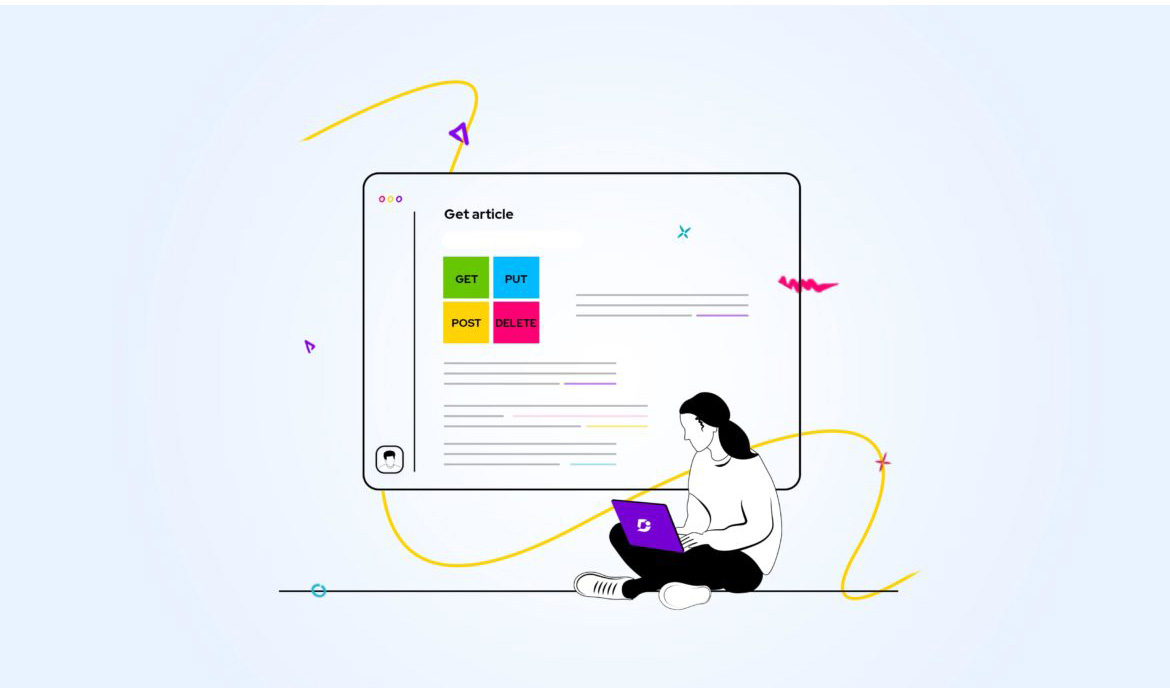
a. Swagger:
Swagger helps developers design, build, and document APIs. It uses the OpenAPI Specification to define APIs, generate code, and create interactive documentation.
b. Docusaurus:
Docusaurus is a tool for generating documentation websites, especially for open-source projects. It offers easy setup, versioning, search functionality, and customization options for documentation.
Continuous Integration and Deployment (CI/CD) Tools:
Continuous Integration and Deployment (CI/CD) tools automate the process of building, testing, and deploying code changes to production environments. CI/CD pipelines help front end developers streamline development workflows, ensure code quality, and deliver updates to users more efficiently.
Some popular CI/CD tools include:
a. Jenkins:
Jenkins is an open-source automation server that enables developers to automate various stages of the software development lifecycle, including building, testing, and deployment. It offers a vast ecosystem of plugins and integrations for customizing CI/CD pipelines.
b. Travis CI:
Travis CI is a cloud-based CI/CD platform that integrates seamlessly with GitHub repositories. It provides automated testing and deployment workflows for web applications, enabling developers to validate changes and deploy updates with confidence.
c. CircleCI:
CircleCI is a modern CI/CD platform that offers fast and scalable build and test infrastructure. It supports container-based workflows, parallel testing, and deployment to multiple environments, facilitating rapid iteration and delivery of code changes.
CI/CD tools promote collaboration, visibility, and automation in the development process, allowing front end developers to focus on writing code and delivering value to users.
Performance Budgeting Tools:
Performance budgeting tools help front end developers set and enforce performance targets for web applications, ensuring that they meet predefined performance goals. Performance budgets define thresholds for key performance metrics like page load time, time to interactive, and resource size, helping developers prioritize optimization efforts and prevent performance regressions.
Some popular performance budgeting tools include:
a. WebPageTest Budget Builder:
WebPageTest offers a Budget Builder tool that enables developers to define performance budgets based on various metrics like load time, speed index, and resource counts. It generates reports and alerts when performance thresholds are exceeded, helping teams monitor and enforce performance goals.
b. SpeedCurve:
SpeedCurve is a web performance monitoring platform that offers features for setting and tracking performance budgets. It provides real-time insights into performance trends, budgets, and optimizations, enabling teams to identify and address performance issues proactively.
c. Lighthouse Performance Budgets:
Lighthouse, an open-source performance auditing tool, offers features for setting performance budgets directly within browser developer tools. It allows developers to define budgets for key performance metrics and receive alerts when thresholds are exceeded during testing.
Performance budgeting tools empower front end developers to prioritize performance optimization efforts, maintain consistent performance standards, and deliver fast and reliable web experiences to users.
Content Delivery Networks (CDNs):
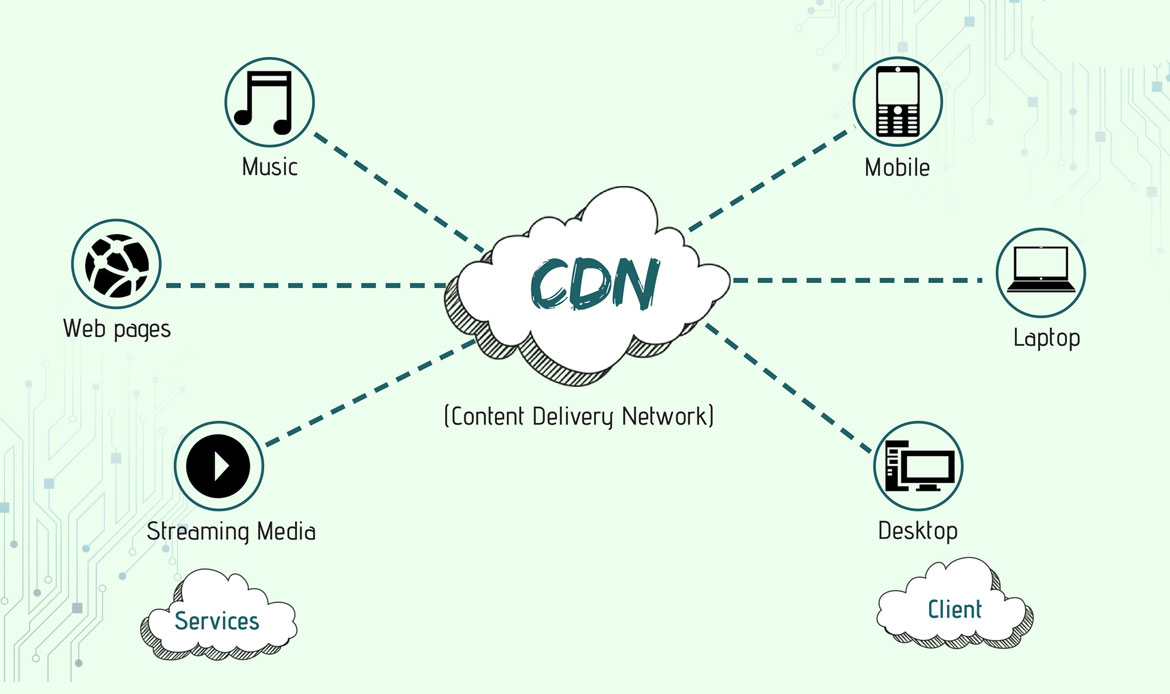
Content Delivery Networks (CDNs) are distributed networks of servers that cache and deliver web content to users based on their geographic location. CDNs help front end developers improve the performance and reliability of web applications by reducing latency, minimizing server load, and optimizing content delivery.
Some popular CDNs include:
a. Cloudflare:
Cloudflare is a global CDN and security provider that offers a suite of services for accelerating content delivery, securing websites, and mitigating DDoS attacks. It provides features like caching, optimization, and CDN-as-a-Service (CDNaaS) for delivering web content efficiently.
b. Amazon CloudFront:
Amazon CloudFront is a scalable and secure CDN offered by Amazon Web Services (AWS). It integrates seamlessly with other AWS services and offers low latency, high throughput, and global reach for delivering static and dynamic content.
c. Akamai:
Akamai is a leading CDN and cloud service provider known for its robust infrastructure and performance optimization solutions. It offers services like caching, content delivery, and edge computing for optimizing web performance and reliability.
CDNs enhance the performance, scalability, and security of web applications by caching content closer to end users, reducing latency, and offloading server resources, making them essential tools for front end developers building global web applications.
Conclusion
In the ever-evolving landscape of front end development, staying equipped with the right tools is paramount to success. With the 20 essential tools outlined in this guide, you have the foundation needed to navigate the complexities of modern web development with confidence and efficiency.
Whether you’re optimizing code, debugging applications, or ensuring cross-browser compatibility, these tools empower you to tackle any challenge head-on and deliver exceptional user experiences. Remember, mastering these tools is not just about acquiring technical proficiency; it’s about unlocking your potential as a front end developer and shaping the future of the web.
So, dive in, explore, and let these tools propel your projects to new heights of creativity and innovation. Your journey to becoming a proficient front end developer starts here.


